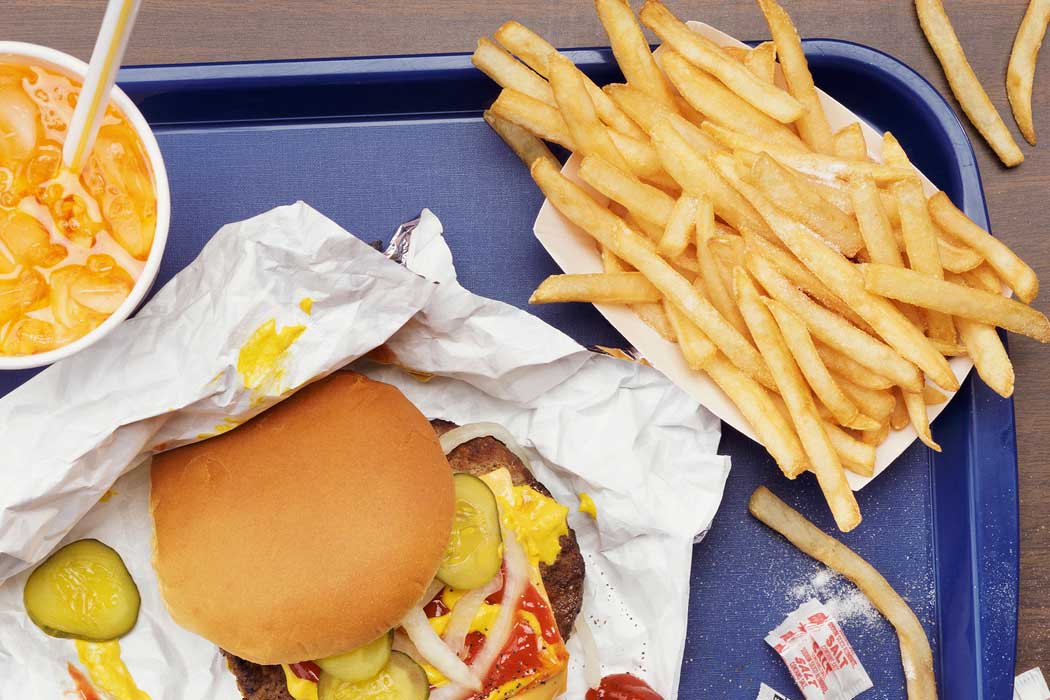As you may have gleaned from the news, our food supply is full of toxins. Our meat is stuffed with antibiotics, our water is full of plastic particles, and our produce is laden with pesticides. Here’s one more contaminant to add to the list: phthalates (pronounced fth-a-late). And, to make matters more interesting, people who enjoy dining out are consuming more of these harmful chemicals than those who cook at home, according to a new study. “Food prepared at home is less likely to contain high levels of phthalates, chemicals linked to fertility problems, pregnancy complications and other health issues,” says Ami Zota, assistant professor of environmental and occupational health at Milken Institute School of Public Health at the George Washington University.
Phthalates are chemicals that are often added to plastic to make it softer and more flexible. They are routinely used in food packaging, preparation machinery, and even gloves used to handle foodstuff. The food industry relies on many products that contain these chemicals, including take-home plastic boxes, food processing equipment and other items used in preparation and processing meals made at cafeteria, restaurant and fast food settings. Meanwhile, phthalates are known endocrine disruptors and allergens, linked to a long list of health problems, including birth defects, infertility, cancer, and even asthma.
The chemicals first came under scrutiny in the 1970s when transfusion blood stored in plastic bags was found to have phthalates. The chemicals were also found in the organs of humans who had received blood transfusions. After that, phthalates proved so ubiquitous that they were discovered even in children’s toys and bibs. Some were eventually banned from use. But many still remain approved and legal chemicals, despite their worrisome qualities. It is known that they can leech from plastic containers and wrappings into the food, adding a side of unsavory chemicals to the unsuspected diners’ entrée.
In a previous study, Zota and colleagues found that people who ate a lot of fast food—such as burgers and fries, for example—had their phthalate levels as much as 40 percent higher than people who rarely chose such meals. Now Zota’s new study finds that the problem isn’t contained only to the fast food joints but affects the rest of the industry. For that study, Zota and Julia Varshavsky at the University of California, Berkeley, asked over 10,000 participants to recall what they ate and where their food came from in the previous 24 hours—and then analyzed the levels of phthalate breakdown products in the participants’ urine samples. People who frequently dined out, whether at restaurants, cafeterias, or fast food places, had phthalate levels 35 percent higher than people who reported eating food mostly purchased at grocery stores and cooked at home. The highest amounts of phthalates were found in teenagers, many of whom eat out a lot. Their phthalate levels were 55 percent higher compared to people who ate only at home.

The authors say the findings are worrisome because two-thirds of the U.S. population buys and eats at least some food outside their homes every day. “Our findings suggest that dining out may be an important, and previously under-recognized source of exposure to phthalates for the U.S. population,” Zota says.
Once a Week
It’s unlikely that the study’s findings will stop restaurant-goers from eating out. Zota notes that while home cooking is a way to reduce phthalates exposure, this public health issue can be addressed by policymakers. Zota’s previous research shows that policy actions, influenced by advocacy efforts of nongovernmental organizations and consumers, can lead to regulations and bans that help reduce human exposure to harmful chemicals in food. That means that restaurant-goers can, after all, ask the policymakers to “hold the phthalates.” Admittedly, it will take much longer than asking to hold a side of fries.







